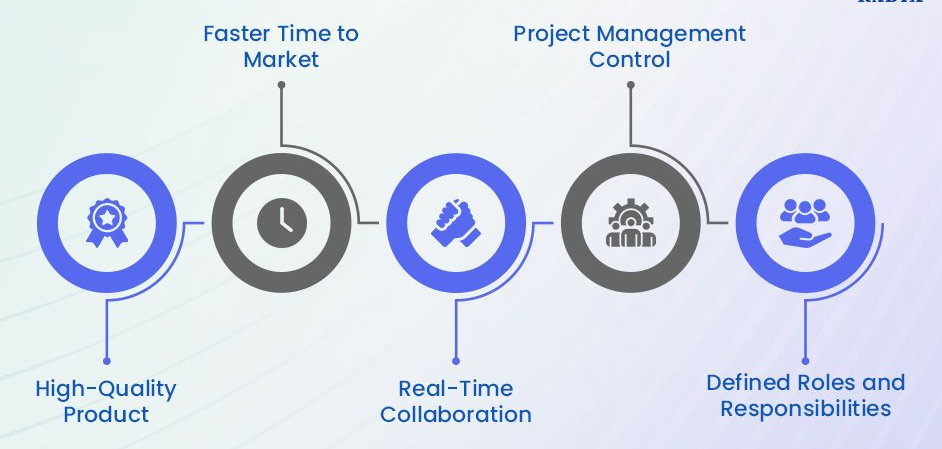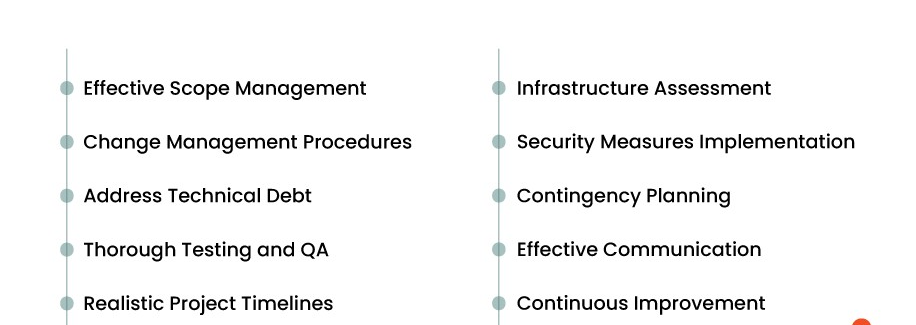Have you ever come across this term SDLC? It refers to the software development life cycle, a process to create, implement and test a new product. The process initiates with developers launching a new product and testing it inside the company to achieve desired results.
You may wonder why the entire team follows a comprehensive process for the purpose, it helps them to evaluate the quality and determine its scope for the future. If you are not aware of SDLC, we are here to explain the entire process in detail.
Table of contents
Understating SDLC
SDLC refers to a process of creating, testing, implementing and modifying a software. Developers use this term when they design a new product for games, mobile phones, and cloud development. Following the entire life cycle helps them to bring out a useful product.
The term life cycle was used back in 1950 to explain the phases in developing a computer. However, everyone commonly uses this term nowadays.
Stages of a SDLC
Every stage of a software development Life Cycle has different activities. On the other hand, the process duration depends on the type of the product and its scope.

Planning
Planning is the initial phase of a software development life cycle. The entire team of expert sit together to brainstorm and share their findings with everyone. Entire team also discuss about risks and threats associated with the software.
The meeting includes detailed discussion about the product, its alignment with company goals, purpose of software and unexpected circumstances that can result in delay.
Evaluation of Requirements
Second stage of SDLC involves gathering all the ideas and converting them into a well-coordinated plan. In this stage, developers have to perform extensive research to ensure that final product will meet their expectations. Now the big step starts here when the entire team has to finalize a plan.
Mockup Designing
So you have got a plan In Front of you, let’s get to wireframing and mockups. The third stage comes after planning, where you have to organize all the tasks you will perform. Nowadays, you can use numerous tools to easily break down your tasks and divide them into short and long term responsibilities.
Testing
The testing phase involves identifying and fixing bugs to ensure the software functions as intended. This includes unit testing, where individual components are tested for correctness, integration testing to verify that different modules work together, system testing to ensure the entire system meets requirements, and acceptance testing to confirm that the software satisfies user needs and expectations.
Deployment
Deployment is the process of installing the developed software in the production environment, making it accessible to end-users. This phase includes setting up the software on servers or devices, providing training to users to ensure they understand how to use the software effectively, and offering documentation that supports users in operating the software smoothly and confidently.
Maintenance
Maintenance is the ongoing phase where the software receives continuous support and updates after deployment. This includes fixing any new bugs that emerge, enhancing features to improve user experience, and applying security updates to protect the software against new vulnerabilities and threats, ensuring that the software remains reliable, efficient, and secure over time.
Importance of the Software Development Life Cycle SDLC

Structured Approach:
- SDLC provides a structured methodology that ensures a systematic approach to software development, reducing the risk of project failure.
Quality Assurance:
- By following the SDLC, teams can identify and fix issues early, ensuring a high-quality final product.
Cost Efficiency:
- Proper planning and design in the SDLC help avoid costly errors and rework during later stages of development.
Client Satisfaction:
- By adhering to the SDLC, teams can deliver software that meets client requirements, enhancing satisfaction and trust.
Mistakes to Avoid During SDLC
Avoiding common mistakes during the Software Development Life Cycle (SDLC) is crucial for project success. One major pitfall is inadequate planning. Skipping detailed planning and requirement gathering can lead to scope creep, missed deadlines, and budget overruns. It’s essential to spend adequate time defining project goals and requirements to guide subsequent stages effectively.
Another common mistake is neglecting thorough testing. Rushing through testing or skipping it altogether often results in undetected bugs and issues that can significantly impact the final product’s quality. Comprehensive testing, including unit, integration, system, and acceptance testing, is vital to ensure the software is reliable and meets user needs.

Ignoring user feedback during development can also be detrimental. Engaging with end-users throughout the SDLC helps identify issues early and ensures the software aligns with their needs and expectations. Failing to incorporate this feedback can result in a product that does not fully address user requirements.
Finally, inadequate documentation and communication can lead to misunderstandings and inefficiencies. Proper documentation and clear communication among team members and stakeholders are essential to keep everyone aligned and informed throughout the development process.
Conclusion
The Software Development Life Cycle is an essential framework for developing high-quality software that meets customer requirements. By following the SDLC stages, businesses and developers can ensure a structured approach to software development, leading to better project outcomes, reduced risks, and increased customer satisfaction.
Above we have also explained about the mistakes you need to avoid when developing your own software. Consider them carefully to ensure your product brings long term benefits
Readmore : How to Drive Traffic with Local SEO
FAQ’s Related SDLC
The SDLC aims to provide a structured approach to software development, ensuring that the final product is high-quality, meets customer requirements, and is delivered on time and within budget.
Common SDLC models include the Waterfall, Agile, and DevOps models, each suited to different types of projects and requirements
The SDLC improves software quality by following a structured process that includes planning, design, coding, testing, deployment, and maintenance, allowing for early identification and resolution of issues.
Testing is crucial in the SDLC as it ensures that the software functions correctly, is free of defects, and meets the specified requirements before deployment.

Smith
Welcome to my blog! As an Digital Marketing expert with over 15 years of experience, I’ve witnessed the transformative power of search engine optimization from the very beginning of my career. In this blog series, I’ll delve into the crucial role SEO , marketing plays in the success of small businesses. Join me on this journey to uncover how leveraging data-driven insights and innovative SEO techniques can propel your small business to new heights, attract a broader audience, and drive sustainable growth in the digital age. Whether you’re a seasoned entrepreneur or just starting out, you’ll find valuable insights and practical tips to enhance your Digital Marketing strategies.


